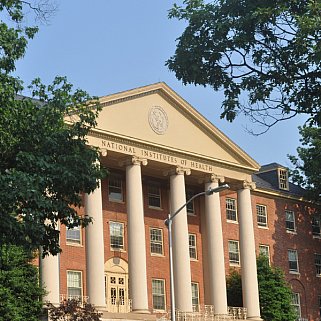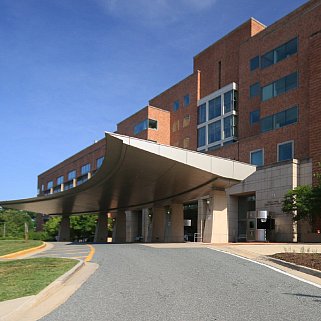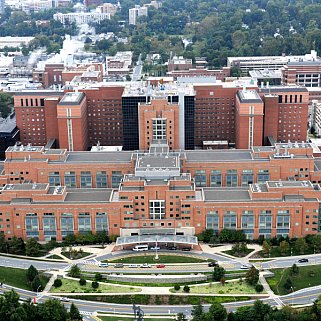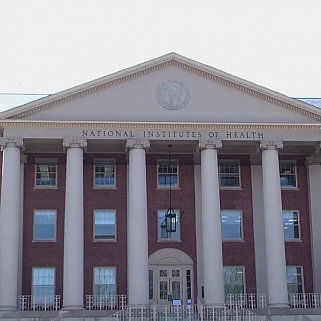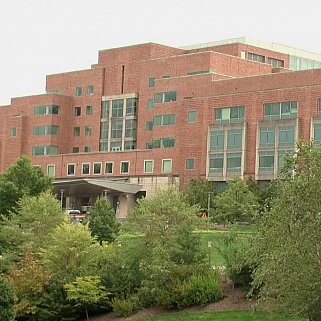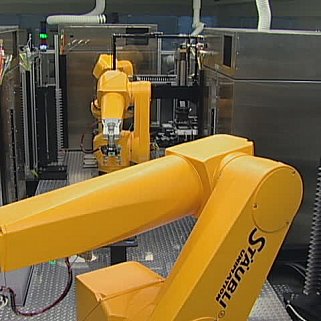You are here
National Institutes of Health – Digital Media Kit
In this kit:
NIH Mission NIH Director Impact of NIH Research NIH Budget NIH Organization NIH Clinical Center Images B-roll
NIH Mission
The National Institutes of Health (NIH), a part of the U.S. Department of Health and Human Services, is the nation’s medical research agency. NIH’s mission is to seek fundamental knowledge about the nature and behavior of living systems and the application of that knowledge to enhance health, lengthen life, and reduce illness and disability.
Historical information about the NIH can be found in the NIH Almanac.
NIH Director
The NIH Director plays an active role in shaping the agency’s activities and outlook, and is responsible for providing leadership to the Institutes and Centers, especially for NIH-wide efforts. The NIH Director is responsible for advising the President on his annual budget request to Congress on the basis of extensive discussions with the Institute Directors.
The position of the NIH Director became presidentially appointed with the passage of the National Cancer Act of 1971 and Senate confirmed with the National Cancer Act Amendments of 1974. Prior to 1971, all NIH Directors were appointed by the Surgeon General, with the exception of Robert Q. Marston, who was appointed by the Secretary of Health, Education, and Welfare.
Impact of NIH Research
NIH improves health by promoting treatment and prevention, contributes to society by driving economic growth and productivity, and expands the biomedical knowledge base by funding cutting-edge research and cultivating the biomedical workforce of today and tomorrow.
Due in large part to NIH research, Americans are living about 30 years longer than they did in 1900. Quality of life is improving. Over the last quarter century, the proportion of older people with chronic disabilities has dropped by nearly one-third.
NIH Budget
More than 82% of the NIH's budget is awarded through almost 50,000 competitive grants to more than 2,500 universities, research institutions, and medical centers throughout the U.S. and internationally, supporting the research of more than 300,000 research personnel. These organizations are not part of NIH but receive NIH funding to conduct research. Research conducted outside of NIH is called extramural. In addition, NIH has about 6,000 scientists who work in NIH’s own research laboratories, most of which are on the NIH main campus in Bethesda, Maryland, and the sounding area, but also include research facilities in North Caroline and Montana. Research conducted by NIH scientists is called intramural.
NIH maintains a publicly available, searchable database of NIH-funded research called NIH RePORTER.
Historical budget information (select Section 1 and 2 on top tab)
Pie chart of NIH extramural and intramural funding
Pie chart of total NIH budget authority
NIH Organization
The National Institutes of Health is made up of 27 different Institutes and Centers, each with a specific research agenda, often focusing on particular diseases or body systems. The NIH headquarters, known as the "NIH campus" to the local community, are located in Bethesda, Maryland. NIH has more than 75 buildings in a campus-like environment on more than 300 acres (roughly half a square mile). Administrative and program operations facilities are also located in off-campus buildings in the surrounding area. NIH scientists conduct their research in laboratories located on the NIH campus, North Carolina, Montana, and in several field units across the country and abroad.
Here is a list of NIH facilities. NIH employs approximately 20,267 federal employees (full-time equivalents) across all NIH locations.
More on the NIH organization.
NIH Clinical Center
The NIH Clinical Center is the nation’s largest hospital devoted entirely to clinical research. Currently, there are about 1,600 clinical research studies in progress. The 870,000-square-feet research center has 200 inpatient beds and in 2022 saw approximately 5,887 new patients, 2,908 inpatient admissions, and 74,871 outpatient visits. The hospital has seen more than 500,000 patients since it opened in 1953.
NIH Clinical Center Facts at a Glance.
Images
B-roll
This page last reviewed on January 21, 2025


